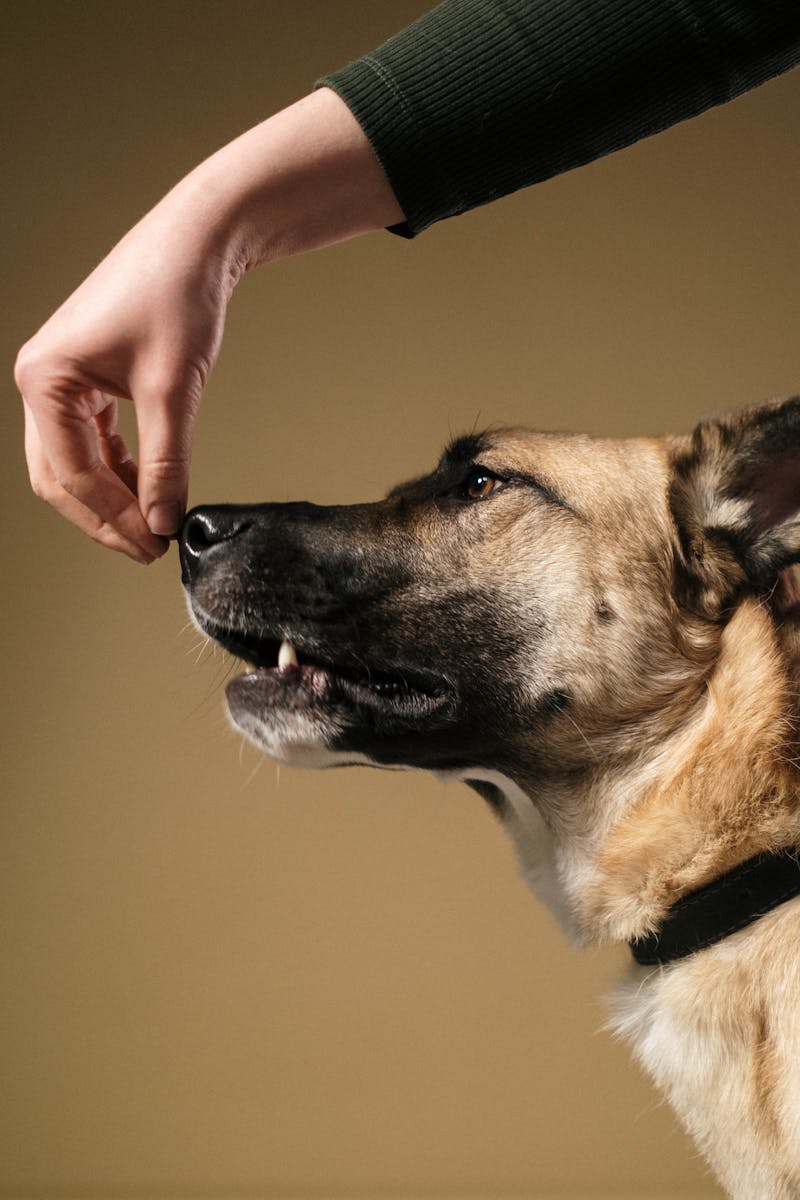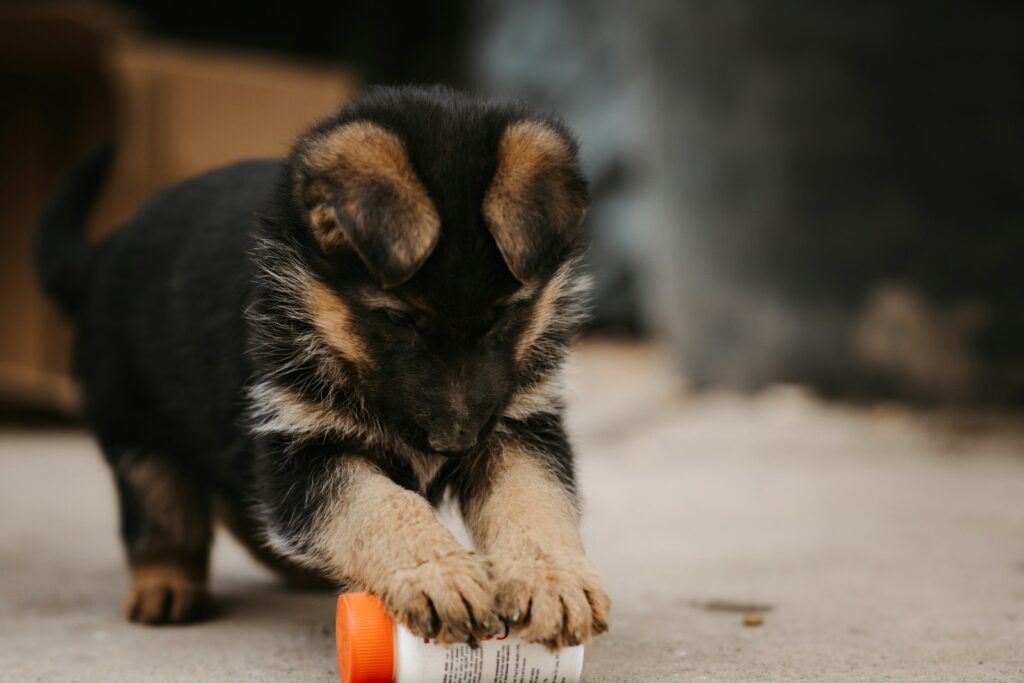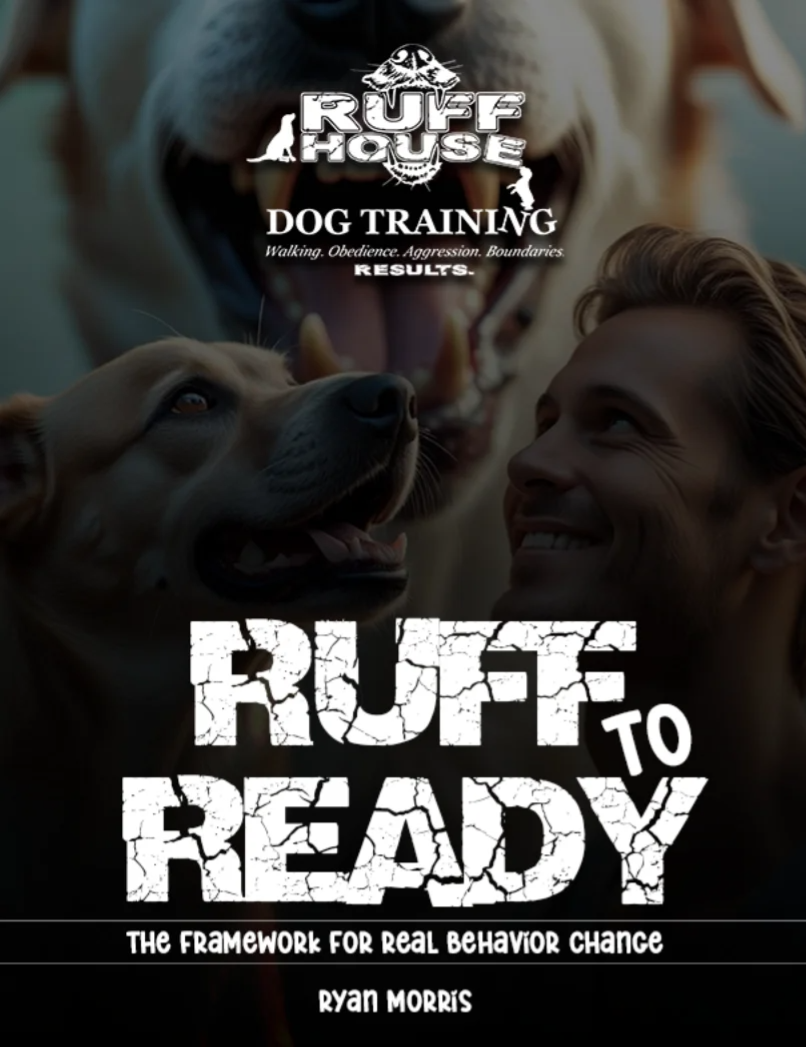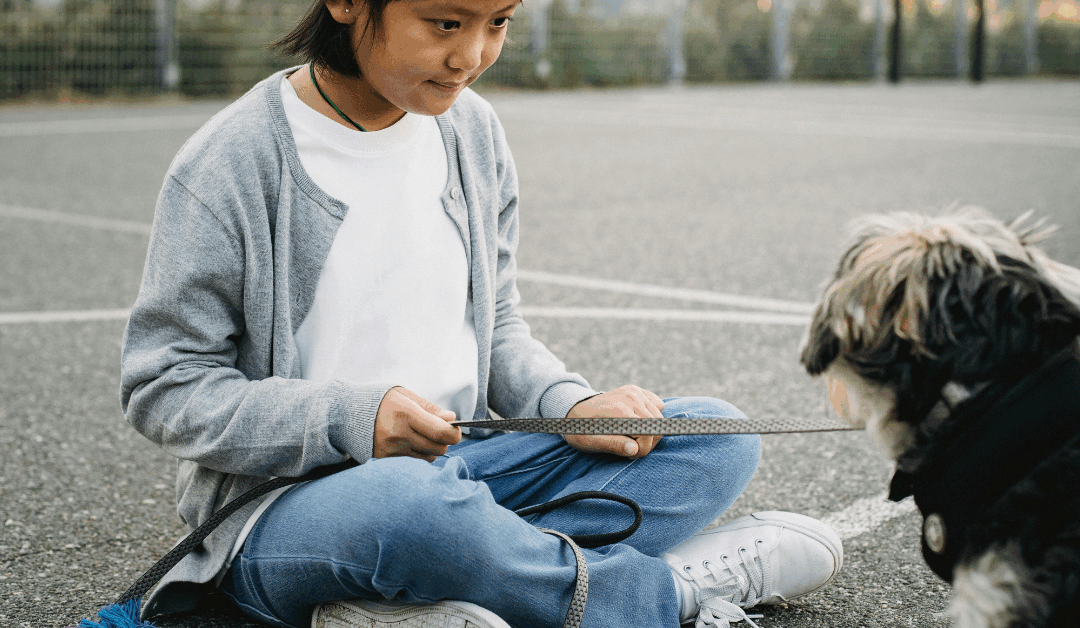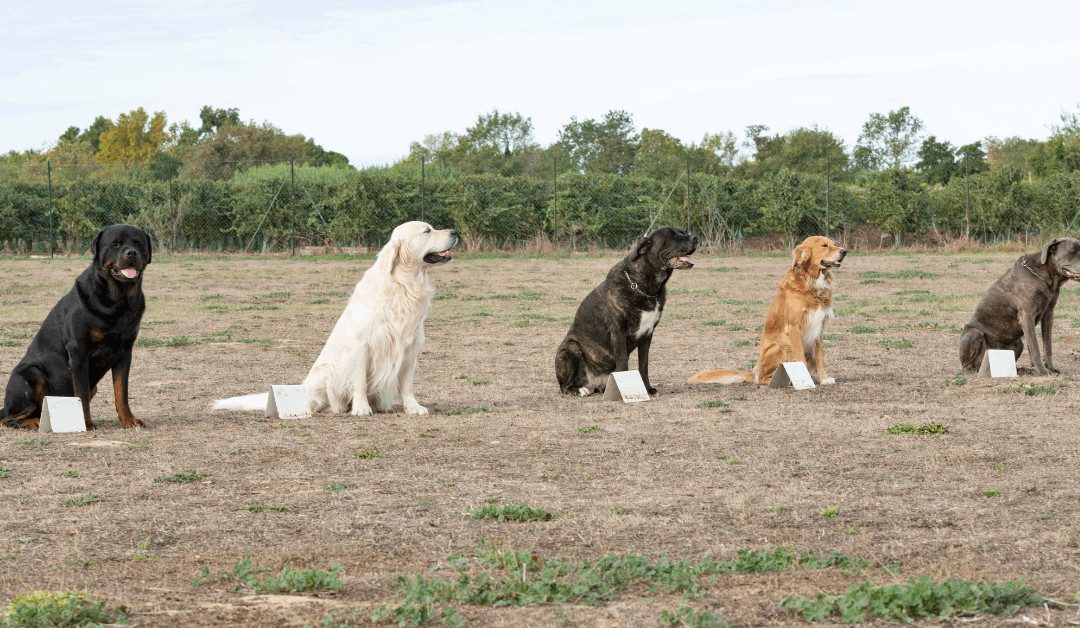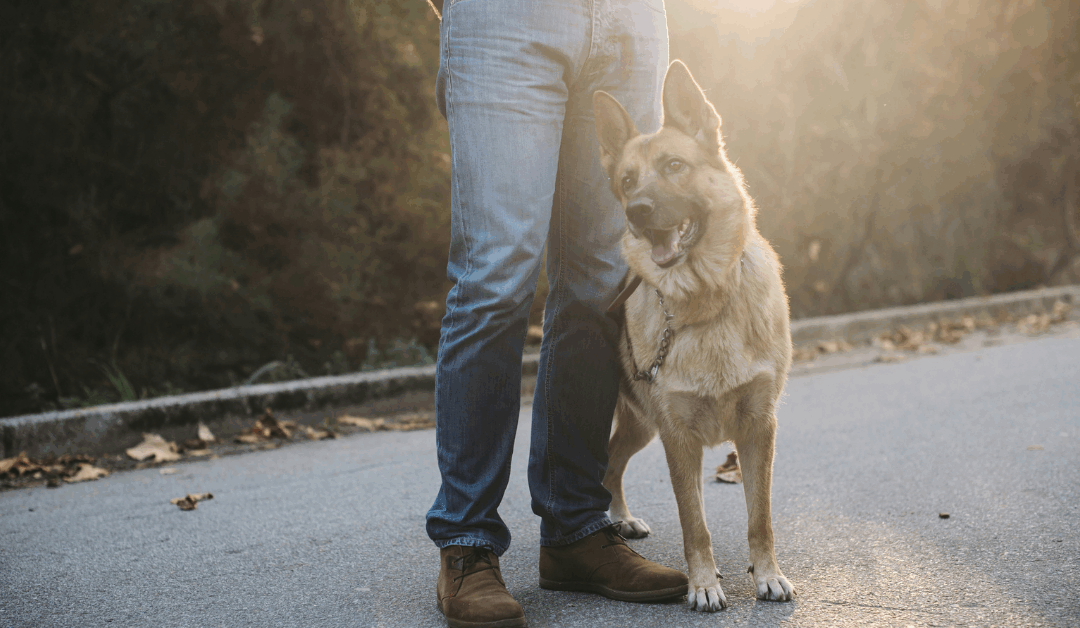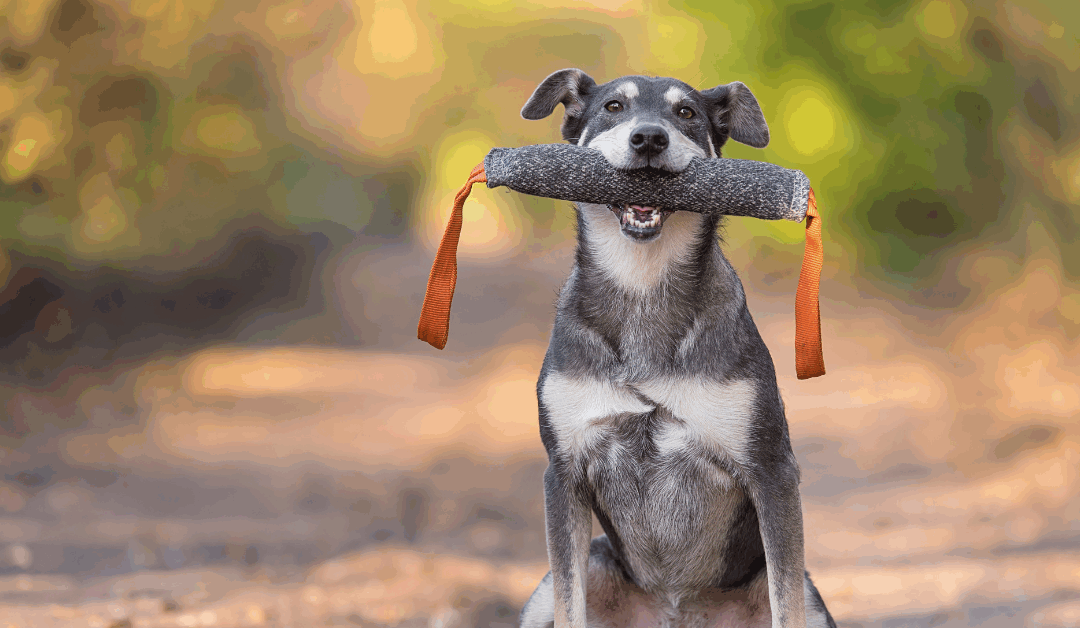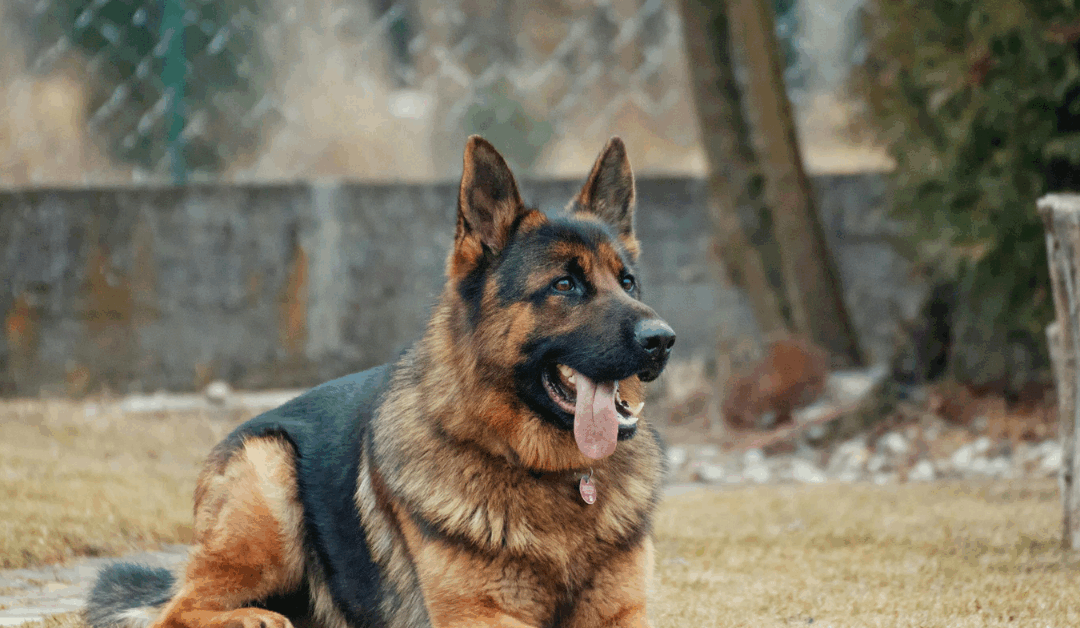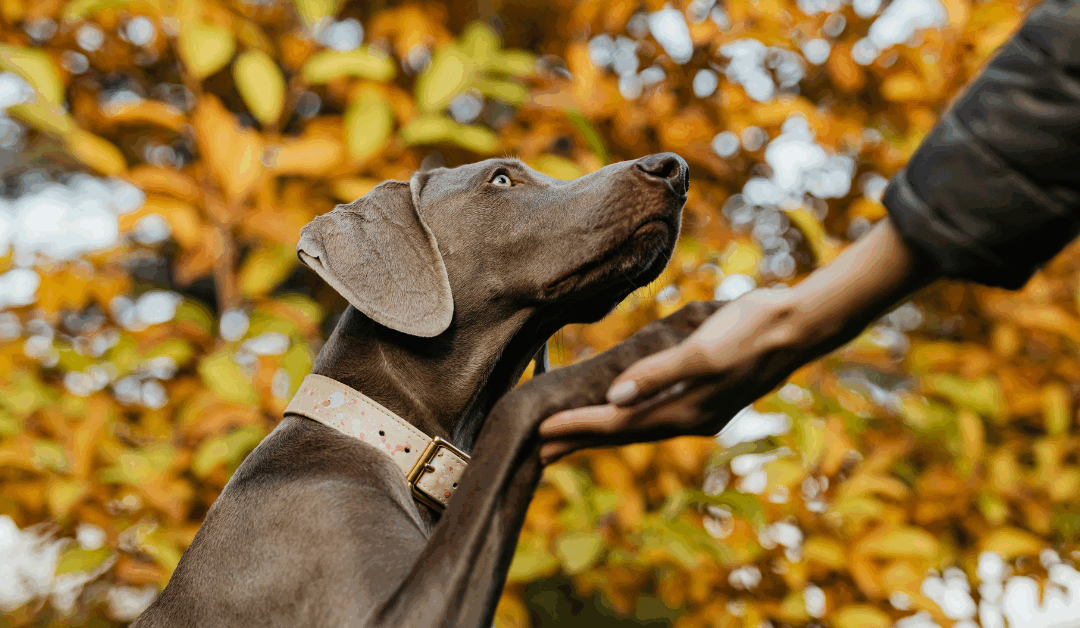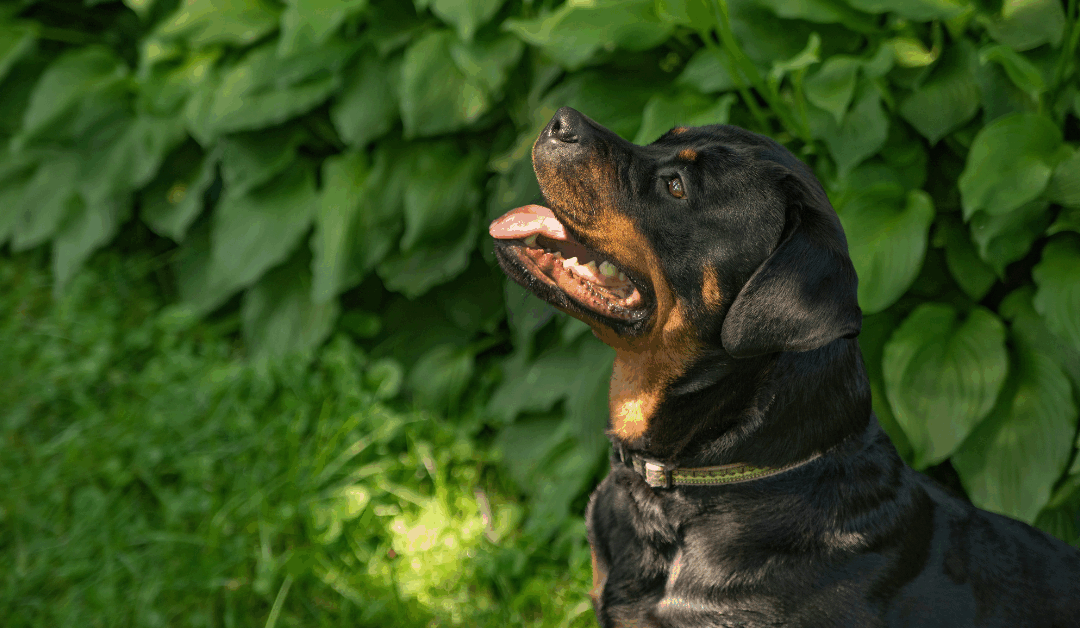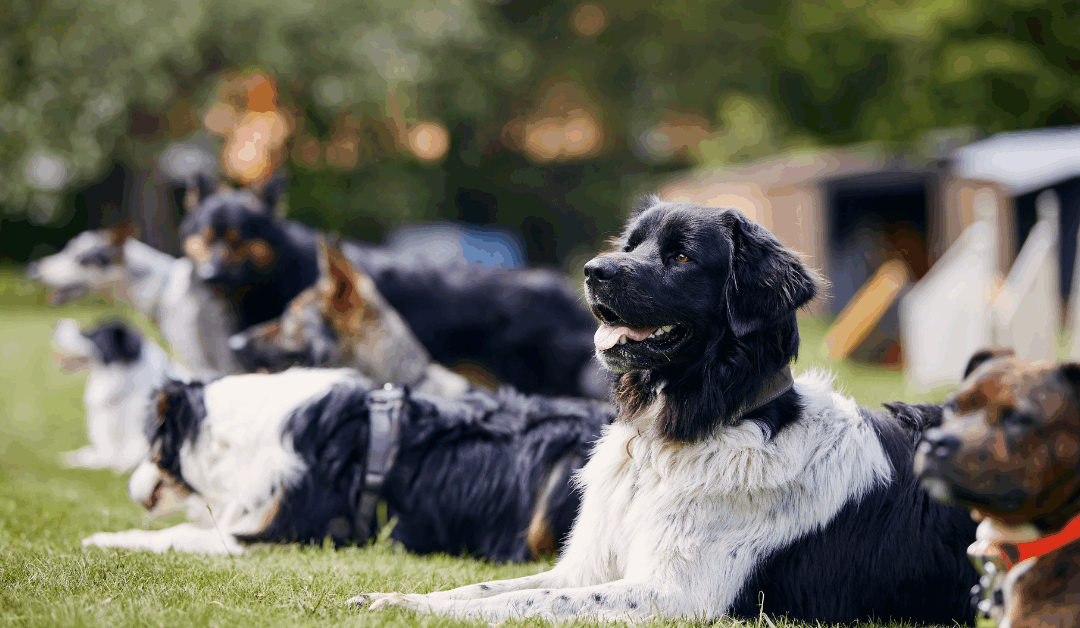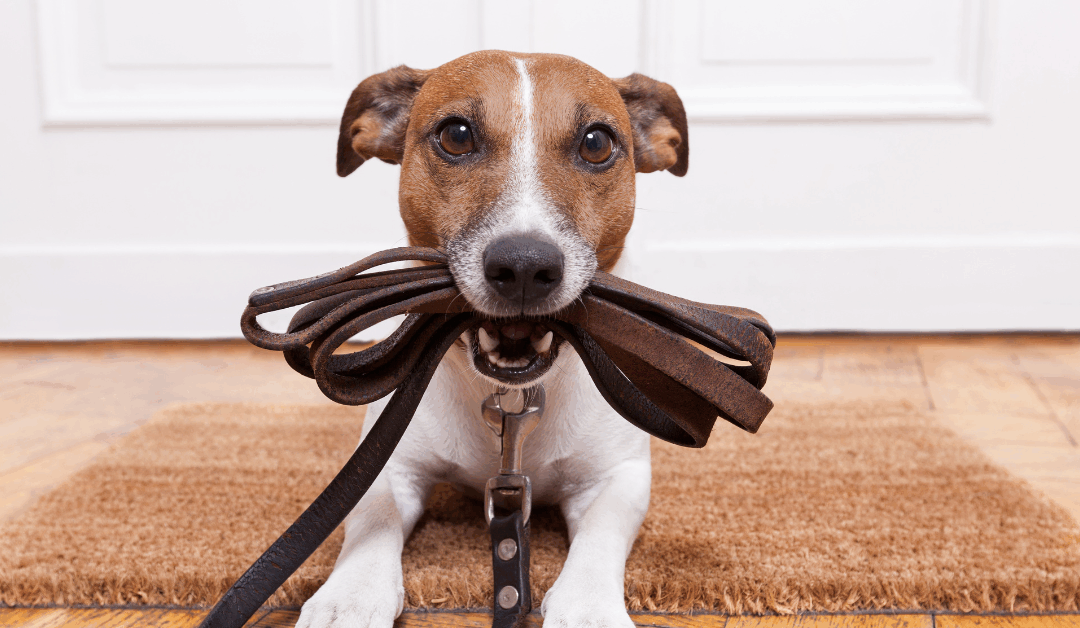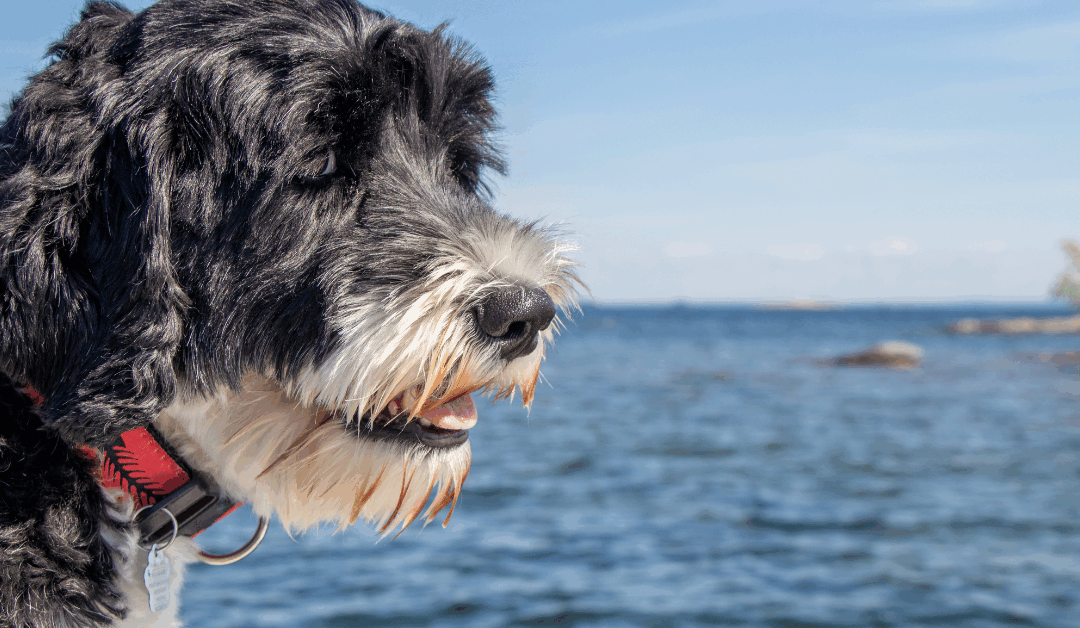Let’s be honest—most dogs love food more than they love listening to us. That’s why dog treats for training are one of the simplest (and tastiest) ways to strengthen communication with your pup.
At Ruff House Dog Training, we’ve worked with over 400 clients across the DC, Maryland, and Virginia region, and we’ve learned that successful training isn’t about complicated techniques or expensive gadgets. It’s about practical, real-life solutions that actually work in your living room, backyard, and neighborhood walks.
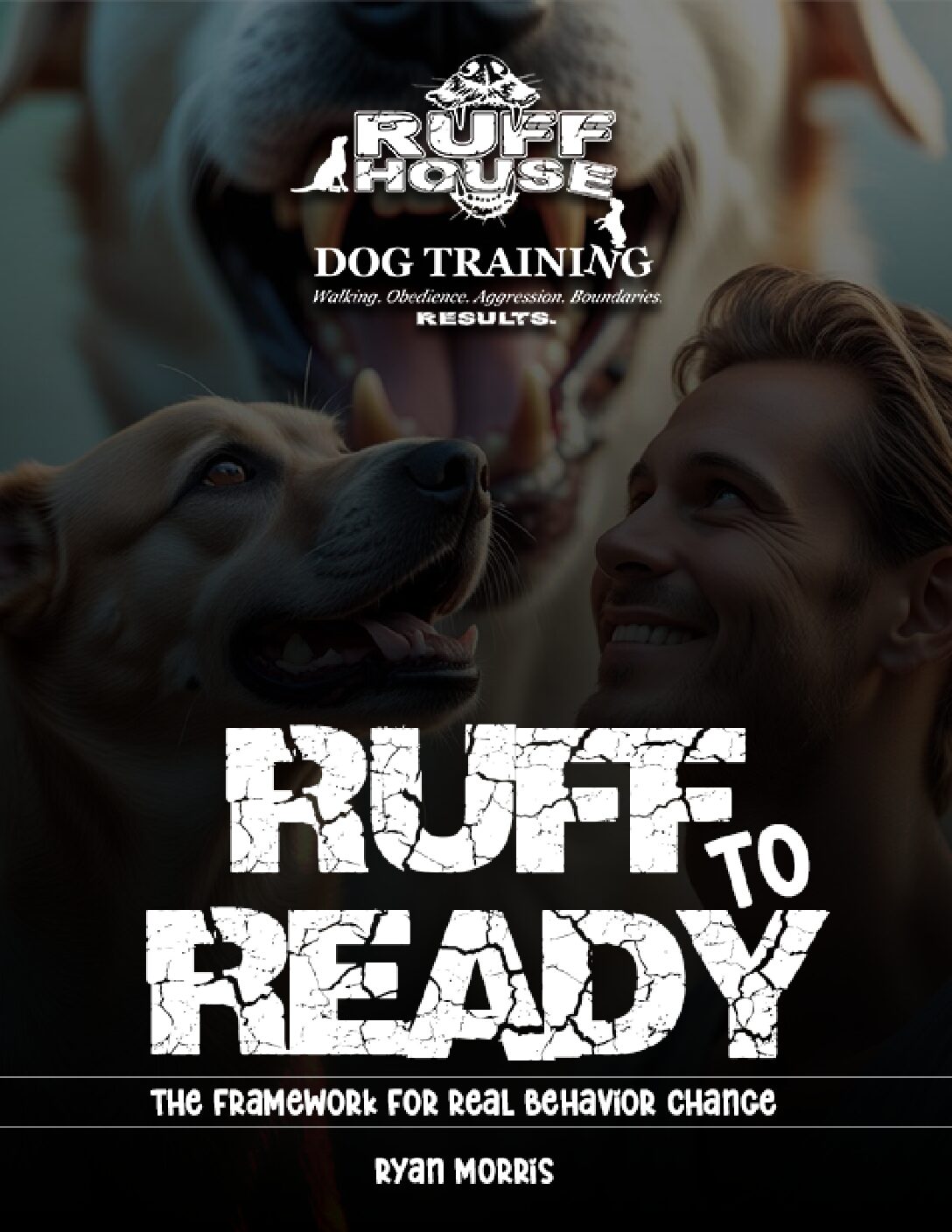
Unlock Real Behavior Change – Download Your Free Guide Now
"*" indicates required fields
But here’s the thing: not all treats are created equal. Should you use them for every training session? What’s the difference between high-value rewards and everyday food? And what exactly is this mysterious “7 7 7 rule” that professional trainers swear by?
Whether you’re dealing with a stubborn adult dog who’s set in their ways or a sharp-toothed puppy who thinks your shoes are chew toys, the right training treats can transform chaos into calm. They’re not just snacks—they’re communication tools that help you and your dog speak the same language.
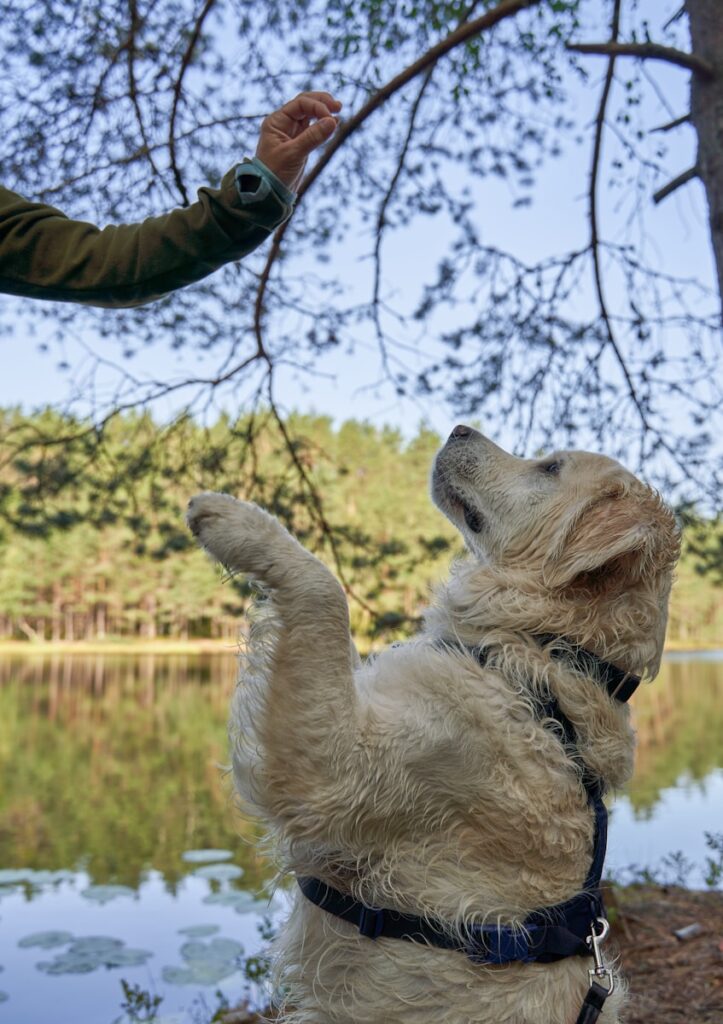
Photo by Barnabas Davoti on Unsplash
Why Dog Treats for Training Actually Work
Training treats tap into something every dog understands: balanced reinforcement. Dogs repeat behaviors that get rewarded, and food provides an immediate, satisfying payoff that makes your pup eager to try again.
Think about it from your dog’s perspective. When they sit and immediately receive a delicious piece of chicken, their brain creates a clear connection: sitting = good things happen. This is especially powerful for puppies, whose attention spans are shorter than a TikTok video, but it works just as well for adult dogs who’ve spent years developing their own (often problematic) habits.
Food rewards also build trust between you and your dog. Each time you deliver a treat after they’ve done something right, you’re proving that you’re worth paying attention to. You become the source of good things, not just the person who says “no” all the time.
But perhaps most importantly, training treats create focus and excitement around learning. Dogs who might otherwise be distracted by squirrels, passing cars, or that fascinating smell coming from the neighbor’s barbecue will suddenly give you their full attention when they know something tasty is on the line.
The key is timing. The treat needs to arrive within seconds of the desired behavior—not after you’ve fumbled around in your pocket, opened a crinkly bag, and broken a biscuit into smaller pieces. This is where the right type of treat makes all the difference.
End the barking, chewing, and chaos—discover how the right treat can change everything.
What Treats are The Best Treats For Training?
Not all dog treats are training treats. Those large, crunchy biscuits your dog loves at dinner time? They’re terrible for training sessions. Here’s why: they take too long to chew, they’re too big to give repeatedly without overfeeding, and the crunching sound can be distracting during focused work.
The best training treats are soft, small, and easy to break into tiny pieces. Think the size of your pinky nail—or even smaller for small dogs. You want something your dog can swallow quickly and get right back to work.
Variety is your secret weapon. Dogs get bored with the same reward every time, just like you’d get tired of eating the same lunch every day. Keep a rotation of different flavors and textures: chicken, beef, salmon, cheese, jerky, or even high-quality kibble. The goal is to keep your dog guessing what delicious surprise might come next.
This brings us to the difference between high-value treats and everyday food rewards. High-value treats are the premium options—think tiny pieces of hot dog, freeze-dried liver, or small chunks of cheese. These are reserved for challenging training moments: teaching a new command, working in a distracting environment, or addressing problem behaviors like excessive barking.
Everyday food rewards can be pieces of your dog’s regular kibble or simple training treats from the pet store. These work great for basic commands your dog already knows or for short practice sessions at home.
For small dogs, portion control is especially important. A treat that’s appropriately sized for a Golden Retriever could be a full meal for a Chihuahua. Break treats into pieces smaller than you think you need—your small dog will be just as food motivated by a tiny morsel as a large dog is by a bigger piece.
Large dogs, on the other hand, can handle slightly bigger pieces, but don’t go overboard. The goal is to reward with larger treats, but not fill them up. A hungry dog is usually a motivated dog.
From chaos to calm—let’s do this.
The 7 7 7 Rule for Dogs
Professional dog trainers have a secret weapon called the 7 7 7 rule, and it’s simpler than you might think. The rule focuses on three key elements: 7 treats maximum per short session, 7 repetitions of each command, and sessions no longer than 7 minutes.
Why such short sessions? Dogs learn better in focused bursts rather than marathon training sessions. A 7-minute session where your dog is completely engaged beats a 30-minute session where they’re mentally checked out halfway through. Short sessions also prevent both you and your dog from getting frustrated, which keeps training positive and fun.
The 7 treats maximum prevents overfeeding while maintaining motivation. If you’re working on “sit,” you might reward the first few perfect sits, then gradually reduce treats as your dog gets more reliable. This teaches your dog that good things happen when they listen, but they can’t predict exactly when—which actually makes the reward more powerful.
Seven repetitions give your dog enough practice to start building muscle memory without overdoing it. Think of it like learning to play piano: practicing a song seven times in a focused session is more effective than mindlessly playing it twenty times while thinking about something else.
The beauty of the 7 7 7 rule is that it makes consistency easier for busy families and first-time puppy owners. Anyone can commit to 7 minutes of focused training, and when you break it down this way, you’ll actually find yourself training more often because it doesn’t feel overwhelming.
Plus, treats make the timing work better. When your dog performs the command correctly, they get immediate reward and feedback through taste and satisfaction. This creates a clear learning loop that helps them understand exactly what behavior you’re looking for.
Schedule your 90-Minute Miracle now—we’ll show you how to use the perfect treat to unlock focus.
What Treats Should I Use?
Here’s the real secret: sometimes the most effective treat is whatever your individual dog goes crazy for. We’ve worked with dogs who would do backflips for a single piece of their regular kibble, and others who only respond to exotic freeze-dried salmon. Part of successful training is figuring out what makes your specific dog tick.
For picky eaters, don’t give up after trying one or two options. Keep experimenting with different proteins, textures, and brands until you find something that makes their eyes light up. Sometimes it takes trying five or six different treats before you discover your dog’s “jackpot” reward.
Because your dog won’t train himself—book your training session today.
Should You Use Treats When Training a Dog?
The short answer is yes—but use them smartly. Treats are tools, not crutches, and the goal is to eventually phase them out in favor of praise, play, and real-life rewards.
Here’s how professional trainers think about it: treats are like training wheels on a bicycle. They help your dog learn the basics and build confidence, but eventually, you want your dog to respond to commands because they trust you and want to please you, not just because they’re hoping for food.
The key is gradual reduction. Start by rewarding every correct response, then begin rewarding intermittently once your dog is reliable with a command. This actually makes the behavior stronger—it’s the same principle that makes slot machines addictive. Your dog never knows if this might be the time they get rewarded, so they keep trying.
But let’s address the elephant in the room: overfeeding. Many dog owners worry that using treats for training will make their dog overweight. Here are some practical solutions:
Use tiny treats—seriously, smaller than you think you need. A reward the size of a pea works just as well as one the size of a grape, but with fewer calories.
Break treats into smaller pieces. That expensive training treat can become four or five rewards instead of one.
Count training treats as part of your dog’s daily food intake. If you’re doing a lot of training sessions, reduce their regular meal size slightly to compensate.
Choose low-calorie options when possible. Many vegetables like small pieces of carrot or apple work as treats for dogs who enjoy them.
Keep treats in a proper pouch or container so you can deliver them quickly without fumbling around. The faster you can reward good behavior, the clearer your communication becomes.
Avoid harmful foods that might be tempting to use as food treats: chocolate, grapes, onions, garlic, or anything with artificial sweeteners. When in doubt, stick to treats specifically made for dogs or simple, dog-safe human foods like plain chicken or cheese.
Download your free behavior guide and get started with helpful tips right away.
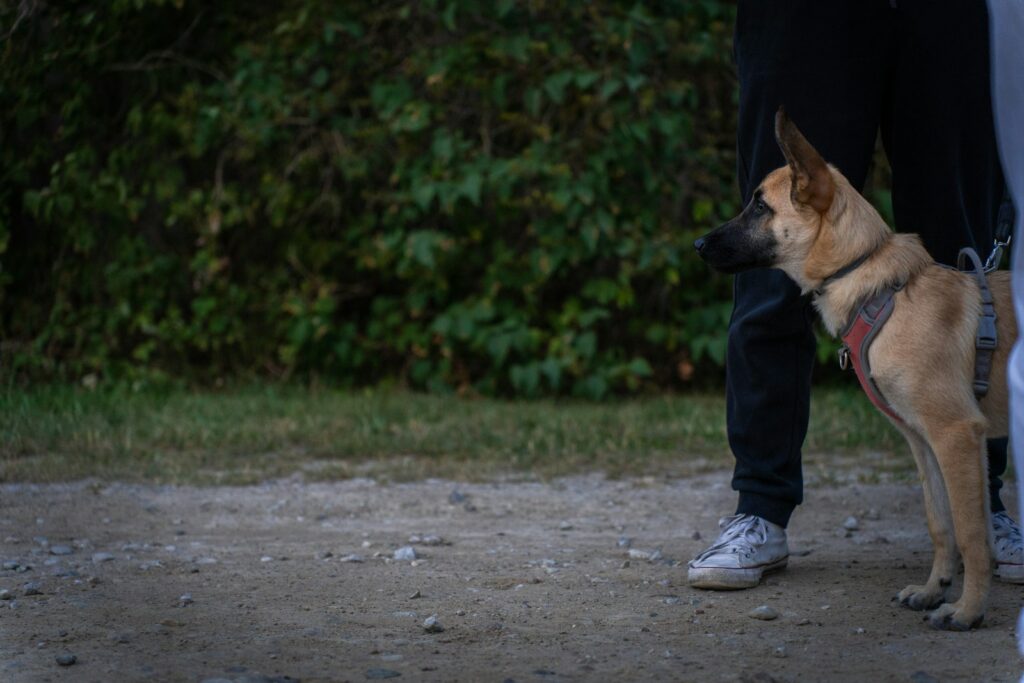
Photo by Anastasiya Badun on Unsplash
Top Dog Training Treats
When it comes to puppy training, having the right treats can make all the difference. Here’s a list of some highly-recommended training treats, along with trusted brands and links to where you can purchase them:
Bil-Jac Little Jacs Small Dog Training Treats: These soft, bite-sized treats are made with fresh chicken liver and come in a resealable bag for maximum convenience. Buy Bil-Jac Little Jacs here
Natural Balance Mini Rewards: At only five calories per treat, these small, tasty bites are made with quality ingredients like chicken, duck, or salmon, perfect for training sessions. Buy Natural Balance Mini Rewards here
Zuke’s Mini Naturals: These small, soft treats are perfect for training sessions, as they’re easy to chew and come in a variety of flavors like chicken and peanut butter. Buy Zuke’s Mini Naturals here
Wellness Soft Puppy Bites: Specifically designed for puppies, these soft treats are packed with delicious flavors like lamb and salmon, making them an excellent high-value option. Buy Wellness Soft Puppy Bites here
Blue Buffalo Blue Bits: Made with real meat as the first ingredient, these soft-moist treats are fortified with DHA for healthy brain development, ideal for growing puppies. Buy Blue Buffalo Blue Bits here
Rocco & Roxie Gourmet Jerky Sticks: Although pricier, these jerky sticks are popular for their high-quality ingredients and great flavor. You can easily break them into smaller pieces for training purposes. Buy Rocco & Roxie Gourmet Jerky Sticks here
By trying out these top treats, you’re sure to find one that your puppy loves, helping make training a rewarding experience for both of you.

In your upcoming training session, begin using these treat tactics. Observe how your dog reacts to various possibilities, pay attention to their preferences, and modify your strategy accordingly. It’s quite common for the ideal training treat for one dog to differ from what works for another.
The rewards that support your dog’s learning should be selected with the same consideration and care that you give to other areas of their health because your dog’s training journey is unique. You’ll discover that training becomes more pleasurable for both you and your dog when you use the appropriate methods and treats.
Don’t forget about praise and play. Even when using food rewards, combine them with enthusiastic verbal praise and physical affection.
